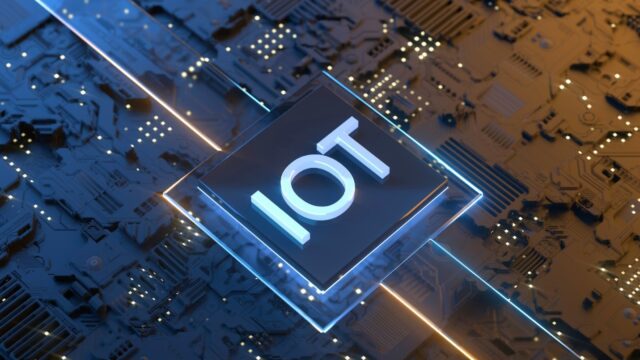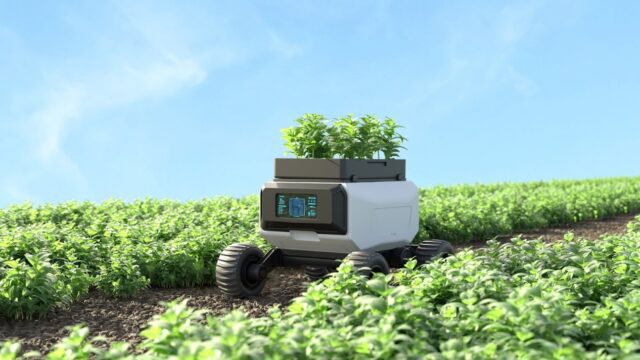Technology has been hailed as the saver of humanity. Since its advent, tech has helped humanity attain heights and breakthroughs previously conceived as impossible, from medical solutions to agricultural breakthroughs. Today, it is helping to shape our fight against climate change.
As we navigate through the challenges of a warming planet, technological breakthrough presents us with an unprecedented opportunity to accelerate progress and achieve inconceivable feats. From enhancing the efficiency of renewable energy sources to redefining our relationship with the Earth’s resources, these advancements mark significant milestones in our quest for a greener future.
Let’s have a quick glance at some amazing technological innovations that if harnessed, can change the tide in our fight against climate change.
Enhanced Geothermal Systems
Geothermal energy, harnessed from the Earth’s natural heat, has been utilized for millennia. However, traditional geothermal systems are limited by specific geological conditions, constraining their widespread adoption. Enter enhanced geothermal systems (EGS), a novel approach that seeks to expand access to geothermal energy through human intervention.
By drilling into deep rock formations and stimulating them with fluid injections, EGS create artificial reservoirs of geothermal energy, effectively unlocking new sources of clean, renewable power. While still in the early stages of development, recent pilot projects demonstrate the feasibility of this innovative approach, signalling a promising future for geothermal energy on a global scale.
Artificial Intelligence
AI is playing a pivotal role in the fight against climate change across various fronts. From monitoring the melting of icebergs to predicting climate disasters and facilitating reforestation efforts, AI’s capabilities are being leveraged to address the multifaceted challenges posed by global warming. One significant application of AI lies in its ability to rapidly assess changes in icebergs, a task that would typically be time-consuming for humans. With AI, scientists can analyze satellite images and measure iceberg movements at a pace 10,000 times faster than traditional methods, providing critical insights into the rate of ice melt and its impact on rising sea levels.
Moreover, AI is instrumental in mapping deforestation patterns, tracking emissions, and predicting weather patterns, enabling proactive measures to mitigate climate risks. Companies like Space Intelligence are utilizing AI algorithms to analyze satellite data and quantify deforestation rates, thereby aiding conservation efforts and preserving vital carbon sinks. Additionally, AI-driven initiatives such as the IKI Project in Africa harness predictive analytics to anticipate climate-related challenges, empowering vulnerable communities to adapt and thrive in the face of environmental uncertainties. As climate change continues to pose existential threats, AI emerges as a powerful ally, offering innovative solutions to safeguard the planet for future generations.
Here are specific ways AI is aiding in the fight against climate change:
- Iceberg Monitoring: AI algorithms analyze satellite imagery to track the movement and melting of icebergs, providing valuable data on sea level rise and polar ice loss.
- Deforestation Mapping: By processing satellite data, AI algorithms detect changes in forest cover and quantify deforestation rates, facilitating conservation efforts and preserving carbon sinks.
- Emissions Tracking: AI-powered systems track and analyze emissions data from industrial processes, enabling companies to monitor and reduce their carbon footprint.
- Weather Prediction: AI models leverage historical weather data to forecast extreme weather events, helping communities and authorities prepare for and respond to climate-related disasters.
- Ocean Cleanup: Environmental organizations deploy AI-enabled technologies to detect and map ocean litter, facilitating targeted cleanup efforts and mitigating the impact of plastic pollution on marine ecosystems.
- Climate Disaster Prediction: AI platforms analyze various factors to predict the occurrence and severity of climate-related disasters, aiding businesses, governments, and communities in disaster preparedness and response planning.
- Decarbonization in Industries: AI-powered emissions-tracking platforms assist industries like metal and mining, oil, and gas in monitoring and reducing their carbon emissions, contributing to overall decarbonization efforts.
- Reforestation: AI-driven drones are employed to reforest degraded areas quickly and efficiently, enhancing carbon sequestration and biodiversity conservation.
- Agricultural Sustainability: AI applications in agriculture optimize resource use, improve crop yields, and reduce environmental impact through precision farming techniques.
- Renewable Energy Integration: AI models forecast renewable energy output and optimize grid operations, facilitating the integration of solar, wind, and other renewable sources into the energy mix.
- Climate Modeling: AI techniques enhance climate modeling capabilities, improving predictions of long-term climate trends and informing policymaking and adaptation strategies.
Super-efficient Solar Cells: Winner of the Best Supporting Actor
Solar power has long been heralded as a cornerstone of renewable energy, but the quest for even greater efficiency has led to the emergence of super-efficient solar cells. Among them, perovskite tandem solar cells stand out for their potential to further optimize the conversion of sunlight into electricity. By combining traditional silicon with perovskite materials in a stacked configuration, these next-generation solar cells offer a compelling solution to improve performance and reduce costs.
While challenges remain in commercializing this technology, recent strides suggest that we are closer than ever to unlocking its full potential. Companies are actively pursuing ways to overcome manufacturing obstacles and address concerns about durability, bringing us one step closer to a future powered by clean, renewable energy.

Internet of Things (IoT)
The Internet of Things (IoT) refers to the network of interconnected devices embedded with sensors, software, and other technologies, enabling them to collect and exchange data. In the context of tackling climate change, IoT plays a pivotal role in promoting energy efficiency, resource management, and environmental monitoring.
IoT devices are deployed in various sectors such as smart cities, agriculture, energy, and water management. For example, in smart energy infrastructure management, IoT sensors gather data on energy consumption, allowing for real-time monitoring and optimization of energy usage. Similarly, in urban water supply management, IoT-enabled sensors monitor water quality, and flow rates, and detect leaks, facilitating efficient water distribution and reducing water losses.
Furthermore, IoT devices enable remote monitoring and control, allowing for proactive maintenance and timely interventions. By leveraging IoT technologies, cities and organizations can make data-driven decisions, optimize resource utilization, and mitigate the environmental impact of their operations.
Digital Twin Technology
Digital twin technology involves creating virtual replicas or simulations of physical assets, systems, or processes. These digital twins are connected to their real-world counterparts and continuously receive data from sensors, enabling real-time monitoring, analysis, and simulation.
In the context of climate change, digital twin technology offers valuable insights for environmental resilience, disaster risk planning, and infrastructure management. For example, cities can create digital twins of their infrastructure, including buildings, transportation systems, and utilities. These digital twins can simulate various scenarios, such as extreme weather events or sea-level rise, to assess their impact on infrastructure and develop effective response plans.
Moreover, digital twins enable predictive maintenance, allowing organizations to identify potential issues before they occur and optimize the performance of their assets. By integrating real-time data and advanced analytics, digital twins help improve operational efficiency, reduce environmental risks, and enhance overall resilience to climate change impacts.
Heat Pumps
In the realm of climate technologies, few innovations rival the longevity and impact of heat pumps. These versatile devices, capable of both heating and cooling spaces using electricity, have become indispensable tools in the fight against carbon emissions. While not a new invention, heat pumps are experiencing a renaissance of sorts, with sales surpassing traditional gas furnaces and momentum building for widespread adoption.
With the potential to significantly reduce emissions and alleviate pressure on conventional heating and cooling systems, heat pumps exemplify the enduring legacy of innovation in the climate technology landscape. As we strive to meet ambitious decarbonization goals, these reliable workhorses continue to play a vital role in shaping a sustainable future.
Space 2.0 Technologies
Space 2.0 technologies encompass the latest advancements in satellite technology, data analytics, and remote sensing capabilities. These technologies enable the collection of vast amounts of data from space, providing valuable insights into Earth’s climate system, environmental changes, and natural disasters.
For instance, satellites equipped with advanced sensors and instruments, such as radar and lidar, can monitor changes in Earth’s surface, including ice sheets, glaciers, and sea levels. This data is essential for understanding the dynamics of climate change and its impact on ecosystems, water resources, and coastal regions.
Additionally, space-based technologies play a crucial role in disaster risk management and response. Satellites can provide real-time imagery and data during natural disasters such as hurricanes, floods, and wildfires, enabling authorities to assess damage, plan evacuation routes, and coordinate emergency response efforts.
 Agricultural robots work in smart farm
Agricultural robots work in smart farm
Robotics
Robotics involves the design, development, and deployment of autonomous or semi-autonomous machines capable of performing tasks in various environments. In the context of climate change, robotics offers innovative solutions for environmental monitoring, disaster response, and biodiversity conservation. For example, underwater robots equipped with sensors and cameras can explore marine environments, collect data on water quality, and monitor marine life. These robots enable scientists to study the impacts of climate change on oceans, coral reefs, and marine ecosystems.
Similarly, aerial drones equipped with advanced imaging technologies can survey landscapes, map deforestation, and monitor wildlife populations. These drones provide valuable data for conservation efforts, habitat restoration, and ecosystem management. Overall, robotics plays a critical role in enhancing our understanding of climate change, mitigating its impacts, and promoting sustainable environmental practices. By leveraging robotics technologies, researchers, policymakers, and environmentalists can work towards building a more resilient and sustainable future.
Conclusion
As we stand at the frontier of climate action, the symphony of innovation crescendos with promise and possibility. Enhanced Geothermal Systems, Artificial Intelligence, and Super-efficient Solar Cells emerge as our champions in the fight against climate change. They are not mere technologies but beacons of ingenuity, illuminating our path towards a sustainable future. As we work towards scaling progress in the fight against climate change, let us not forget the power of collaboration, the strength of innovation, and the boundless potential within each of us to shape a world where sustainability reigns supreme. For it is not just the technologies we wield, but the spirit of humanity driving us forward, that will ultimately steer us towards a greener, more vibrant tomorrow.
About CheckCarbonFact
CheckCarbonFact is a social accountability platform for promoting sustainability and responsible climate action by citizens, businesses and government. Read more about us here: https://checkcarbonfact.com/about/
Carbon Fact for the Day

Found it interesting and would like more in the mail?




